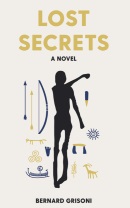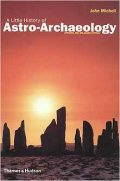<< Books/Products >> Book Review: The Archaeology of Nuragic Sardinia by Gary Webster
Submitted by SolarMegalith on Thursday, 02 June 2016 Page Views: 3950
Neolithic and Bronze AgeCountry: Italy Region: Sardinia (Sardegna) Type: Broch or NuragheInternal Links:
Unlike in his 1996 book, Gary Webster focuses solely on Nuragic archaeology – the earlier periods from Palaeolithic to Chalcolithic, extensively described in A Prehistory of Sardinia 2300-500 BC, in this book are dealt with in a very short summary. This approach is understandable, since the new evidence and progress in research on the Neolithic and Chalcolithic periods in Sardinia (to some extent also the Mesolithic) warrants a separate publication about them. The discussion is arranged chronologically, but Webster decided to drop the traditional names of the periods from Nuragic I to IV, which is a good decision in light of several different chronological models (Melis 2003, Ugas 2005 etc.) which put consecutive Nuragic periods in different time-frames.
The book shows a good awareness of the changes and advances in the Sardinian prehistoric archaeology of the past two decades, including the pushing of the beginnings of Nuragic culture forward from 2300 BC (Webster 1996) to 1800 BC (the earlier datings from Protonuraghe Bruncu Madugui and tomba di giganti Palatu are not reliable) and new dating of the protonuraghi (corridor nuraghi) placing them after 1800 BC. His treatment of the economy, architecture, material culture and structure of the society is well-balanced in each chapter, and discussion of these different aspects of the Nuragic culture is illustrated with presentation of specific sites. Webster extensively uses the results of his own excavation from Duos Nuraghes settlement in Borore (Webster 2001), and the selection of other case-studies is very good, showing awareness of recent progress (discussion of the settlement site of Sa Osa in Cabras, which is particularly important in the studies of Nuragic economy).
Perhaps the discussion could have involved a little more extensive treatment of regional settlement patterns, which are very different in specific parts of Sardinia, ranging from the clusters of nuraghi with buffer zones around them (Bonzani 1992), through occupation on the edges of highland plateaus (Puddu 2001), to more dispersed settlements. An interesting and valuable addition to the discussion of the Nuragic archaeology is a short discussion of the prehistory of Corsica in each chapter, which is important in context of cultural, especially architectural, parallels between the two islands.
 Importantly, Webster maintains a critical view of traditional, long-held interpretations which are rooted in different areas of Nuragic archaeology – an example is his criticism of the interpretation of the Southern Sardinian Nuragic sites with Mycenaean finds, such as Nuraghe Antigori and Nuraghe Domu ‘e S’Orku in Sarroch, as sites of barter trade with the Eastern Mediterranean traders and gateways for the Aegean goods into the island (Webster 2015: 125).
Importantly, Webster maintains a critical view of traditional, long-held interpretations which are rooted in different areas of Nuragic archaeology – an example is his criticism of the interpretation of the Southern Sardinian Nuragic sites with Mycenaean finds, such as Nuraghe Antigori and Nuraghe Domu ‘e S’Orku in Sarroch, as sites of barter trade with the Eastern Mediterranean traders and gateways for the Aegean goods into the island (Webster 2015: 125). A similarly balanced view is offered in interpretation of the Iron Age water cult in Sardinia. Also, Webster rightly questions (p.143-144) the assumption, derived from the traditional chronological models, that no new nuraghi were built in the Iron Age – with only about 1% of sites securely dated such assessment is indeed far from certain.
Finally, the idea of cultural duality in the Early Iron Age, creating dichotomy between indigenous and foreign elements after the arrival of Phoenicians, is put into question, with hybridisation suggested by van Dommelen (1998) on the basis of the material culture being an alternative. A bit more attention could have been paid to the alternative interpretations of the structure of the Iron Age Nuragic societies – most of the section of this topic (p.216-221) is devoted to discussion of the traditional model of the society from Lilliu (1988) with four distinct social classes, while several significantly different interpretations which were put forward in recent years (Tronchetti 2012, Araque Gonzalez 2014) are not directly addressed. Also, the issue of the Late Iron Age (Iron Age 2) decline of Nuragic culture received little attention, while important contributions in this field have been made since 1996 (e.g. Usai 2007).
The iconographic material is extensive and sufficiently illustrates the Nuragic architecture and material culture. Numerous plans, sections and drawings of the Nuragic monuments give an adequate overview of the architecture in Sardinia from the Early Bronze Age to Early Iron Age.
To sum up, The Archaeology of Nuragic Sardinia is an important and significantly updated synthesis of our knowledge of the Nuragic culture in Sardinia. It can be recommended not only to those seeking general understanding of the Bronze Age and Early Iron Age in Sardinia, but also those wanting to understand these periods in the wider context of Central Mediterranean prehistory or looking for an up-to-date synthesis of our knowledge about the Nuragic culture.
Review by Cezary Namirski (SolarMegalith)
 The Archaeology of Nuragic Sardinia by Gary Webster
The Archaeology of Nuragic Sardinia by Gary WebsterPublished by: Equinox Publishing
Pages: 253
Bibliography:
Araque Gonzalez, R. (2014). Social Organization in Nuragic Sardinia: Cultural Progress Without ’Elites’?, „Cambridge Archaeological Journal” 24 (1), p. 141-161.
Bonzani, R.M. (1992). Territorial Boundaries, Buffer Zones and Sociopolitical Complexity: A Case Study of the Nuraghi on Sardinia, in „Sardinia in the Mediterranean: A Footprint in the Sea”, edited by R.H. Tykot, T.K. Andrews, Sheffield: Sheffield Academic Press, p. 210-220.
Lilliu, G. (1988). La civilta dei Sardi dal Paleolitico all’eta dei nuraghi. Torino: Nuova ERI.
Melis, P. (2003). The Nuragic Civilization. Sassari: Carlo Delfino Editore.
Puddu, M.G. (2001). Documenti archeologici del territorio di Serri, in „L’eredita del Sarcidano e della Barbagia di Seulo: Patrimonio di conoscenza e di vita”, edited by M. Sanges, p. 91-93.
Tronchetti, C. (2012). Quali aristocrazie nella Sardegna dell’Età del Ferro?, in „Atti della XLIV Riunione Scientifica: la prehistoria e la protostoria della Sardegna”, Firenze, p. 851-856.
Ugas, G. (2005). L’alba dei nuraghi. Cagliari: Fabula.
Usai, A. (2007). Riflessioni sul problema delle relazioni tra i nuragici e i fenici, „Sardinia, Corsica et Baleares Antiqvae” V, p. 39-62.
van Dommelen, P. (1998). On colonial grounds: A comparative study of colonialism and rural settlement in first millenium BC west central Sardinia. Leiden: Archaeological Studies Leiden University.
Webster, G. (1996). A Prehistory of Sardinia 2300-500 BC. Sheffield: Sheffield University Press.
Webster, G. (2001). Duos Nuraghes: A Bronze Age Settlement in Sardinia. Oxford: Archaeopress.
Webster, G. (2015). The Archaeology of Nuragic Sardinia. Sheffield: Equinox.
<< Book Review: The Archaeology of Herefordshire: An exploration by Keith Ray
Book Review: Numbers of the Gods - Unlocking the Secret Science of the Druids >>






 We would like to know more about this location. Please feel free to add a brief description and any relevant information in your own language.
We would like to know more about this location. Please feel free to add a brief description and any relevant information in your own language. Wir möchten mehr über diese Stätte erfahren. Bitte zögern Sie nicht, eine kurze Beschreibung und relevante Informationen in Deutsch hinzuzufügen.
Wir möchten mehr über diese Stätte erfahren. Bitte zögern Sie nicht, eine kurze Beschreibung und relevante Informationen in Deutsch hinzuzufügen. Nous aimerions en savoir encore un peu sur les lieux. S'il vous plaît n'hesitez pas à ajouter une courte description et tous les renseignements pertinents dans votre propre langue.
Nous aimerions en savoir encore un peu sur les lieux. S'il vous plaît n'hesitez pas à ajouter une courte description et tous les renseignements pertinents dans votre propre langue. Quisieramos informarnos un poco más de las lugares. No dude en añadir una breve descripción y otros datos relevantes en su propio idioma.
Quisieramos informarnos un poco más de las lugares. No dude en añadir una breve descripción y otros datos relevantes en su propio idioma.